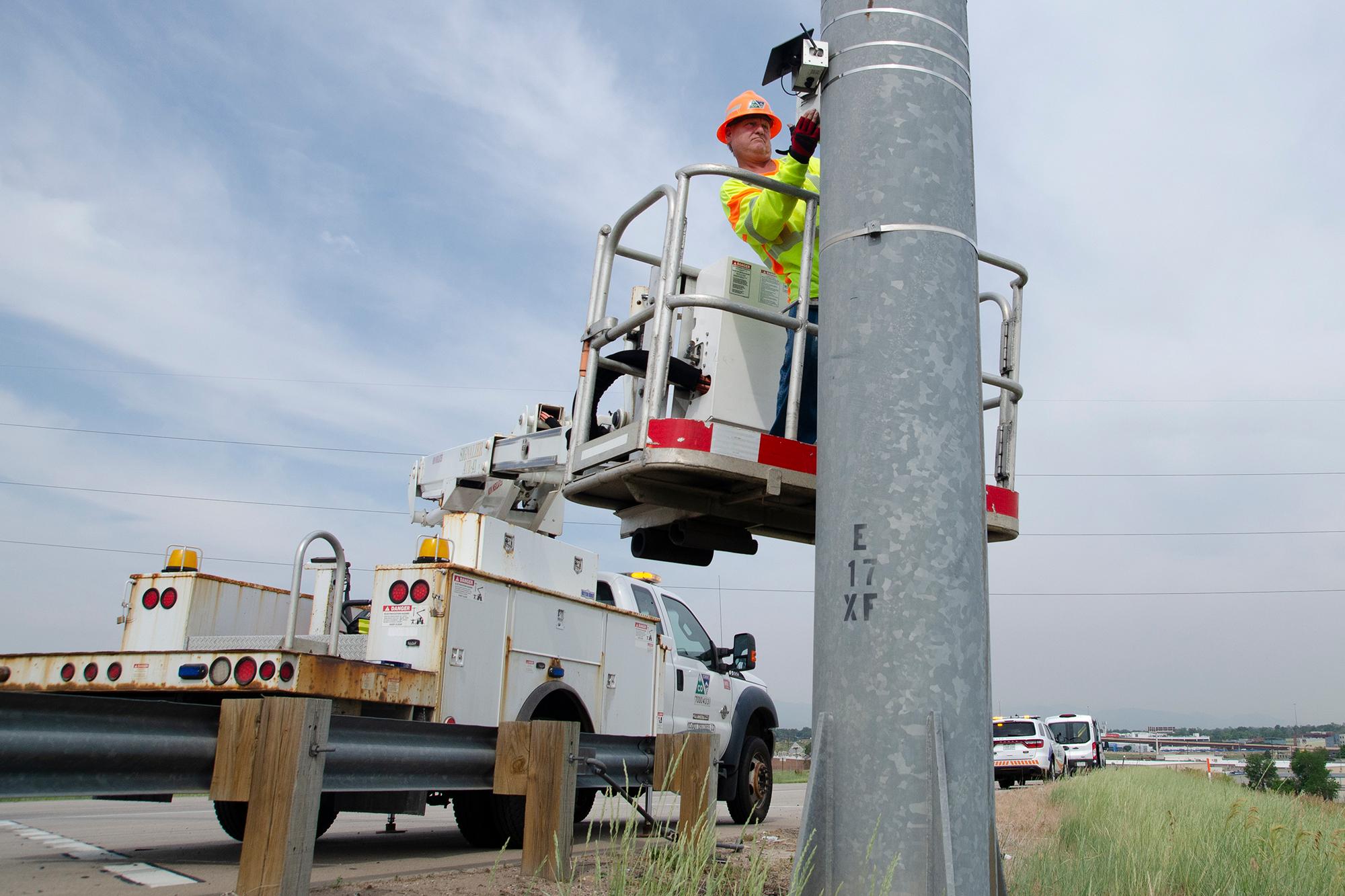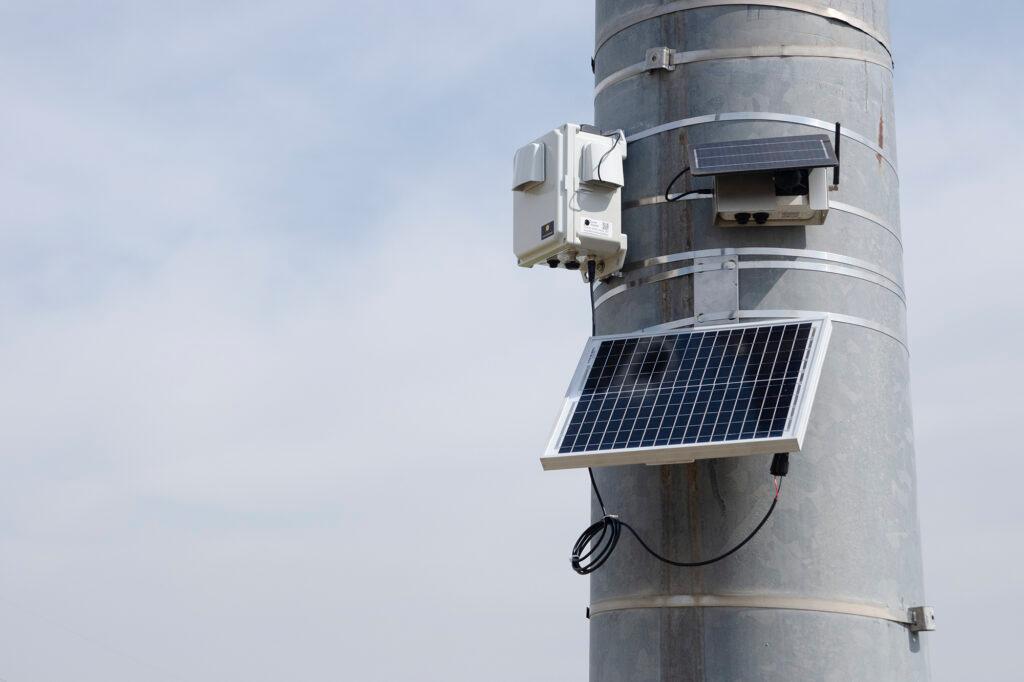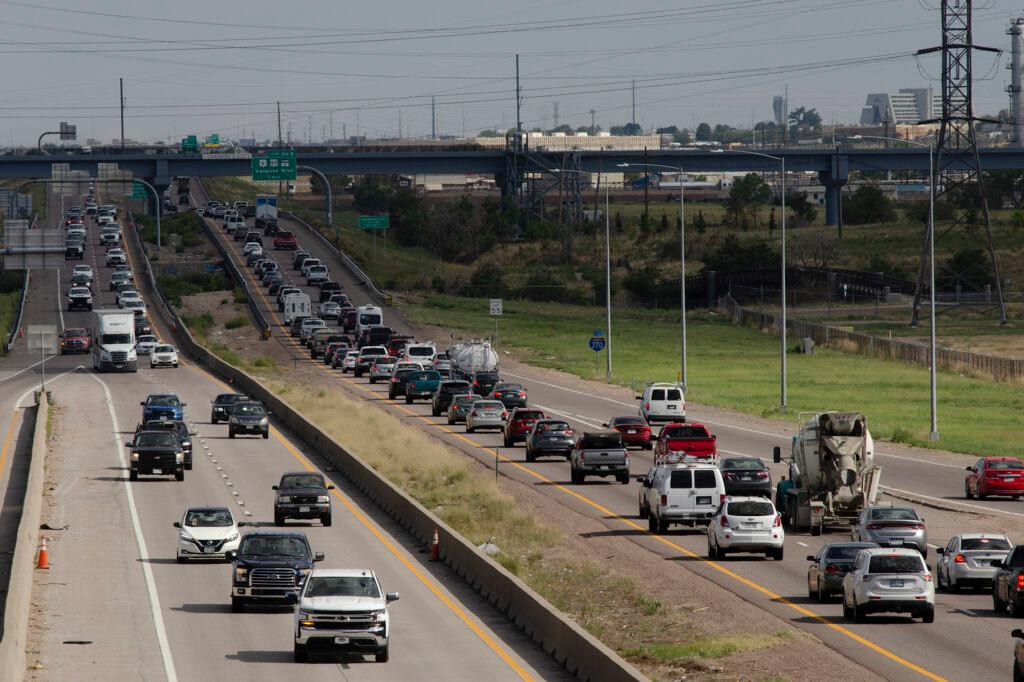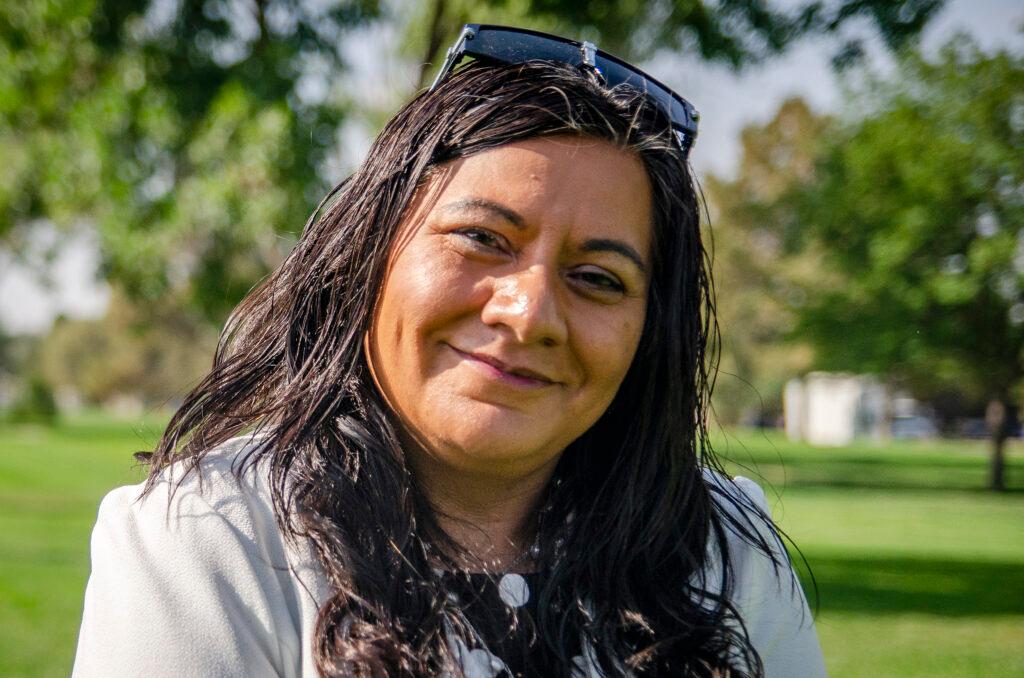
The haze hung thick in the late June air as Joe Griffin, a Colorado Department of Transportation electrical tradesman, strapped a bread loaf-sized box to a signpost about 8 feet above Interstate 270 in Commerce City.
Standing below, Gordon Pierce opened an app on his phone. A blue signal indicated the solar-powered air monitoring sensor was already connected.
“It doesn’t take long,” said Pierce, a technical services program manager for the Air Pollution Control Division of the Colorado Department of Public Health and Environment.
The two agencies have installed a series of sensors along the often-congested interstate in anticipation of its planned reconstruction and expansion. CDOT wants to expand the highway’s capacity and upgrade aging structures that weren’t designed to carry modern-sized trucks. The project could get underway in 2023 and last until 2026.
The sensors will provide the state with enough detailed data to answer a “big burning question” for Pierce.
“What’s the air quality like before versus after construction?”
Answering this question is especially critical for the southern end of Commerce City, which is adjacent to several pollution-generating highways and large industrial sites like the Suncor refinery. CDOT officials hope to use the data to come up with methods to offset any spike in pollutants during and after construction.
Local residents who say they’ve been living with pollution and its side effects for years with little protection from state authorities are skeptical of the effort. The median household income in the area is about $10,000 less than the Denver metro as a whole, and more than half of the community’s residents are Hispanic.
“I don’t feel that we’ve had people really looking out for us,” said Maria Zubia, a Commerce City native and community activist. “People who should have been really keeping an eye on our community when it came to the air quality, when it came to the water quality, when it came to the basics.”

CDOT says it’s had a 'sea change' in how it approaches the environment.
The department’s current expansion project on Interstate 70 in north Denver was highly controversial. CDOT has faced multiple lawsuits over its environmental impacts.
Rebecca White, CDOT’s director of transportation development division, said the direct mitigation measures the department took — including new windows and air conditioning units for more than 200 nearby homes — pushed the agency into new territory.
“We’d never done those types of investments before,” White said. “It kind of set a precedent for having those conversations and we’re ready to have them on future corridors.”
That includes the I-270 corridor, where White said CDOT will collect air quality data, consult with community members, and then act on it.
“It's not a situation where we get more data and we say, ‘well, that's interesting,’” White said, adding that mitigation possibilities include walls, vegetation and increased transit service.
A new state law also requires CDOT to measure and mitigate air quality impacts of large construction projects on nearby communities.
“It’s definitely a sea change,” White said. “And it’s a good one.”

Some Commerce City residents said they need more than just data.
Zubia, the community activist and a local school board member, grew up and has raised her three children in south Commerce City. She described it as a calm, nice place to live — with the exception of the poor air quality.
“Two of my three kids have had asthma since they were three months old,” she said.
New air quality data collected by the state health department in the spring and summer of this year showed levels of fine particle pollution, which comes from local sources like vehicle exhaust and Suncor and distant sources like wildfire smoke, reached levels high enough to cause health problems for some people.
State health officials have also found that area residents go to the emergency room for asthma at a much higher rate than residents elsewhere in Colorado. They’re also less likely to have health insurance.
The recent spate of wildfire smoke has given much of the Front Range a little taste of what life is often like in Commerce City, Zubia said.
“If you can imagine that stuff all the time, over your household, over your schools, over your churches, over your grandparents' home, would you be satisfied with that? Would you be happy about that?” she said.

Zubia called the state’s new network of air monitors along I-270 “a good starting point.” What she’d really like is no highway expansion at all, but the state is set on it.
Zubia said she accepts that. The industry around her community — the refinery, the highways — it helps make Colorado run. And given that, she said, the state should do everything it can to protect that community that has to live next to it. She suggested a new school building with state-of-the-art filtration and air conditioning units for local seniors.
“Don't just talk about it,” she said. “But actually do something that is showing us that you're serious about respecting us as a community.”
Juliet Romero lives just a few blocks from I-270. She said she’s often stuck in traffic and understands why CDOT wants to expand the highway. But she’s also worried about worsening air quality — she already has to keep her kids inside on bad air days.
“It's kind of depressing,” she said. “And it's just something that I feel like I don't have any control over the air. There's not really any escape from bad air quality.”
Romero is hopeful CDOT will help expand public transportation in the area — the nearby RTD bus comes only every 30 minutes at peak times — and not just expand the highway. That could, she noted, lead to more vehicles on the road.
“Increased traffic increases burning fossil fuels, which is adding to the climate disaster that we’re currently living in,” she said. “So ultimately, it’s just not a long-term solution at all.”








